#aramaic
Text
Wait until these kids in the watermelon gang discover that Aramaic is older than Arabic.
#israel#am yisrael chai#jumblr#Aramaic#Arabic#first century#palestine#watermelon brigade#arm chair warriors
181 notes
·
View notes
Photo
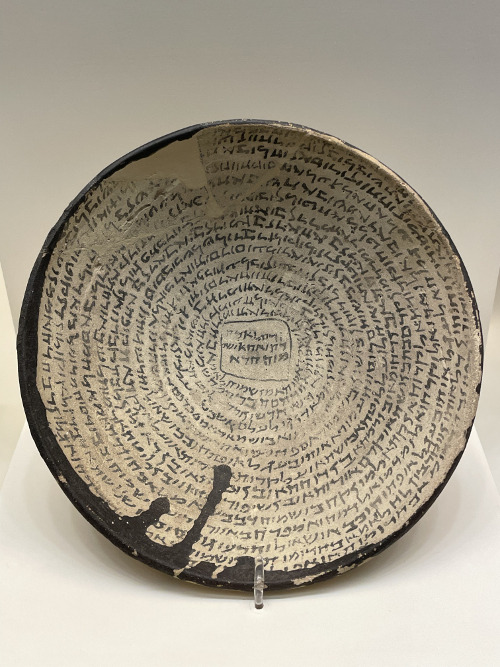
Near Eastern magic bowl with Aramaic inscriptions. The clay incantation bowl is a form of early protective magic found in Persia and Mesopotamia. National Archaeological Museum, Athens, GREECE.
Photo by Babylon Chronicle
956 notes
·
View notes
Text
In the small Syrian village of Maaloula an ancient linguistic tradition lives on. Here the Muslim and Christian residents still speak Aramaic, the language Jesus spoke.
140 notes
·
View notes
Text
The Syriac language is a dialect of Aramaic that originated in ancient Mesopotamia and has historically been used by various Christian communities, particularly those in the Middle East, such as Syriac Orthodox, Assyrian Church of the East, and Chaldean Catholic Church. It has its own unique script and literary tradition, and it has been used as a liturgical language in some Christian denominations.
Syriac is a later development of Aramaic.
Aramaic, The language spoken by Jesus Christ.
A Semitic language closely related to Syriac.
📍Our Lady of Lebanon, Lebanon.
#christian#jesus#christian blog#christianity#jesus christ#god#bible#bible verse#love#faith#aramaic#syriac#syriac language#aramean
29 notes
·
View notes
Text
Do you know what I want for Christmas? The ability to read/speak every language on the Earth. Yes, even dead ones.
53 notes
·
View notes
Text
Thinking about language, and identity, and community, and Jewish history, and of course When the Angels Left the Old Country...
And how, to me, the characters' relationships to language feel reflective of their relationships, identities, and experiences in the context of Jewish history.
Sit down. Have some tea.
Per the book:
[Little Ash] had come from Babylon and the angel, perhaps, from the Garden of Eden.
Uriel (under one name or another) has presumably been around since the beginning, or at least something like it.
And the angel's first — and, for a very long time, only — language is Hebrew. The original language, the Holy Tongue, the language of Torah, the language of Creation, the language of a people in their homeland.
That is the language the angel speaks; the only language whose words comes naturally to its tongue; and for most of its existence the angel has never felt either the need or the ability to try to pick up another.
The angel used a certain vague sense of superiority to excuse to itself its failure to communicate with humans. What did anyone need to speak of, it sometimes thought, that could not be said in holy words?
In times gone by, speaking only Hebrew might well have been sufficient. And maybe, the angel is not ready for those times to be gone. (Can you blame it? Who would be ready — to accept that you are no longer at home, and your people are no longer at home, and even the language from which the whole world was built is no longer enough to get by?)
So, somehow, it manages to spend centuries as the Angel of Shtetl, a place where everything is Yiddish... all without speaking a single word in that language.
...Well, no, that's not quite true. The angel speaks exactly one, single word in Yiddish, but it does speak that one quite frequently. If a name counts as a word, anyway.
Ashel.
The only thing the angel says in Yiddish is its chevrusa's name.
(Yiddish to call its chevrusa by name; Aramaic to study Talmud with its chevrusa; English, later, to come to its chevrusa's rescue. Talk about love languages, hm?)
~ ~ ~
Which, of course, brings us to Ashel. To recap, here's what we know about about the when and where of his birth:
The demon king Ashmedai, over the course of several centuries of the Babylonian Exile, had taken two hundred and fifty bird-footed babies from their mothers’ arms...
And it was also mentioned in the quote cited at the beginning of this post that he comes from Babylon.
So... in stark contrast to Uriel, Little Ash was born into exile. He was the last of his father's sons, which means that by the time he came along they must have been far, far into those several hundred years.
(And from the fact that the "Babylonian Exile" is described here in terms of centuries, it seems clear that the term is being used in a broader sense than the relatively narrow, maximum-seventy-year era to which it usually refers.
Maybe, even when the Second Temple was built and the people had a temporary respite from dispersion, Ashmedai and his family never went back home. Maybe, for them, that first exile — which, for all the people, would not be the last — never ended at all.)
In any case, Little Ash was born in exile, and so the Jewish world as he knows it has always been one of diaspora. And not only does he have a demon's gift for languages, by the time that we meet him he has very specifically claimed Yiddish as his primary language. And he's gone much further than can be explained by simply wanting to be able to communicate:
Little Ash, for reasons known only to himself, had adopted a Yiddish accent in all languages, around the time of the false messiah.
As the Jewish world struggles to recover in the wake of the devastating blow of Shabbetai Tzvi (the false messiah), as they grappled with crushed hopes and deep turmoil and sorely damaged community... what does Little Ash do?
I'm Yiddish, he says now, Yiddish meaning Jewish. And he makes sure to say it with every word he speaks, no matter what language he's using at any given moment.
Yiddish: the language of exile, the language of home. For Little Ash, as for so many of us also born in diaspora, these concepts are intertwined and hard to separate, in a way that someone of Uriel's background would find very difficult to understand.
Even so, Uriel calls him Ashel.
~ ~ ~
...Oops, I didn't make to turn this post into a half-formed essay. Hope your tea is still warm.
But, one last thought: together, in learning and conversation alike, Little Ash and Uriel both know Aramaic. Judeo-Aramaic, to be precise.
An ancient language of the Jews... but, more specifically, somewhat like Yiddish, an ancient diaspora language of Jews. And the language of the Talmud, which among many other things served as a sort of bridge; a way of holding some amount of continuity from the era of Temple Judaism to the Rabbinic Judaism of diaspora.
They speak Aramaic, they study Aramaic, and they share Aramaic.
#dandelion says#when the angels left the old country#meta#wtaltoc meta#dandelion meta#little ash#uriel federman#jewish feels#history#jewish history#languages#hebrew#yiddish#aramaic#ashel#jumblr
99 notes
·
View notes
Text
can someone confirm or deny that this is ancient Aramaic? strange question, I know


89 notes
·
View notes
Note
Hi, I wanted to thank you for your post about the distinction of Judeo-Aramaic and Aramaic. I wanted to share that I have ended up becoming friends with some Assyrians who feel a strong sense of kinship with Jews due to their modern situation and have had some really interesting conversations with them.
I also wanted to say, it's an important distinction because by misnaming Judeo-Aramaic "Aramaic" people may not realize there are separate but related languages still spoken and used by modern-day Arameans, Assyrians, and Chaldeans, usually written in the Syriac script, which are considered neo-Aramaic languages.
I hope you don't mind my asking, I have recently been interested in understanding the shift from the paleo-Hebrew alphabet to the Hebrew alphabet used now, do you have any good resources for the history of that change? It's also okay if you don't know or don't have time/energy to answer.
I'm glad you like my post! Yes, a lot of people don't realize that Aramaic variations are still spoken today, and that Aramaic is its own language distinct from Hebrew.
So the short answer for the shift from Paleo-Hebrew script (which is most similar to Pheonician script) to current Hebrew script (Ktav Arami) has a lot to do with the Babylonian colonization of ancient Israel and Judea.
Here is a diagram I found showing the evolution of Hebrew script:
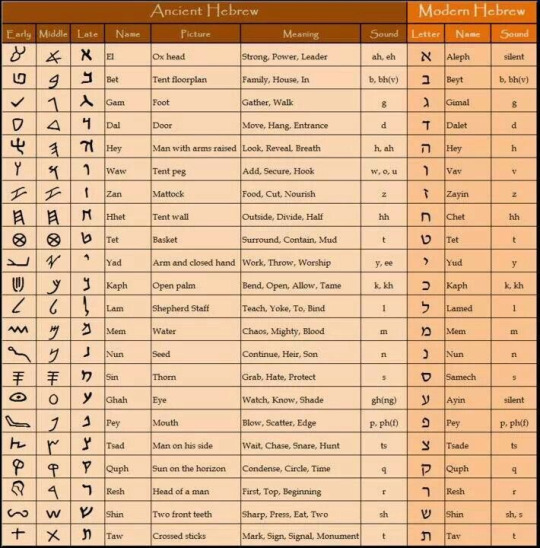
If you notice, early Hebrew script is indistinguishable from Pheonician
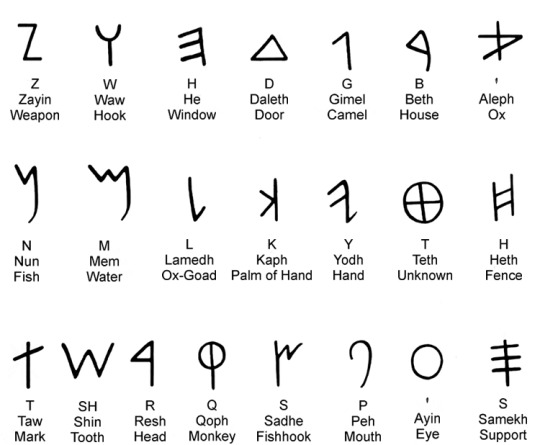
While later Hebrew looks a lot more like Aramaic

And then the Hebrew alphabet evolves further into the alphabet we recognize today.

But the old Aramaic script is actually preserved in Hebrew script. While more modern Hebrew text is used in official printing, the handwriting native Hebrew speakers (including myself) looks a lot more like the Aramaic alphabet

Sephardic script, or "Rashi Script", another script of Hebrew used in the middle ages, also draws similarities with the Aramaic alphabet

Basically, alphabets change over time. The Pheonicians were longtime trade partners with the Ancient Israelites, so it makes sense that they'd have the same alphabet. Then, the Babylonians invaded many many years later. Aramaic turned to Judeo-Aramaic to become the language of the Jewish diaspora, which influenced the alphabet. The alphabet evolved further into a distinct alphabet, but the Aramaic influence remains in the handwriting.
Some articles I recommend for more reading:
About the evolution of Hebrew
About "Rashi Script"
About Jewish diasporic languages
About Aramaic in Jewish History
About the Hebrew Alphabet and its spiritual significance
About Judeo-Aramaic
About the importance of Hebrew
Enjoy!
[note: very very brief image descriptions in alt text]
#hebrew#aramaic#language#linguistics#jumblr#judaism#jewish language#jewish culture#hebrew alphabet#jewish history
204 notes
·
View notes
Text
APRIL FOOLS?!
NAH
ASSYRIAN NEW YEAR AND CHALDEAN MONTH
13 notes
·
View notes
Text
No no no.
Silly white people.
You DIDN’T invent Christianity.
You adopted it. There’s no shame in that but please STOP acting like you created it!
(I’m pretty sure you don’t see the Turks or the Circassians doing this with Islam)
It was never truly YOUR religion. Not originally I mean.
You just sort of borrowed it from the Middle East.
And then whitewashed the shit out of it.
Blame the Romans (ESPECIALLY the Romans) and the Greeks (to a lesser extent) for that. (I’ll give Armenia a pass)
You dumb shits.
What’s that?
You think the ancient Greeks were always Christians from the start?
What are you, stupid?
Are you stupid?
Are you STUPID?!
Fucking hell.
What.
Do you think Jesus was Greek or something?
Okay he may have (MAY have!) been able to speak it, though Aramaic was his mother tongue. But still.
He sure as shit didn’t spake English or Latin!
And he definitely wasn’t from fucking New Jersey!
I mean come on!
#dougie rambles#personal stuff#religion#christianity#whitewashing#revisionism#bullshit#vent post#political crap#sort of#fucking morons#jesus#jesus christ#jesus of nazareth#Greek#Latin#aramaic#roman empire#fuck the romans#anti imperialism#conversion#new jersey#feel free to reblog#history#kind of#history of religion
15 notes
·
View notes
Text
Can't stop thinking how PPs (pro palestinians) force "decolonization" on israel by forcing arabic onto the names and everything when these are the native languages of canaan, aka what they call "palestine":
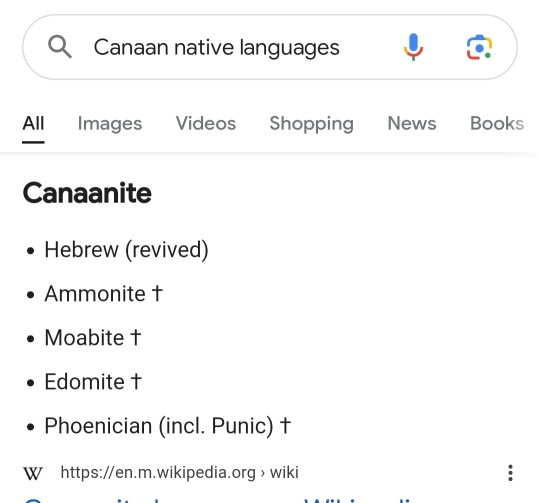
Modern hebrew was indeed revived in Europe but it is still a moddle eastern jewish native canaanite language
so no its not nablus, or al aqsa or whatever they call whichever city bc arabic is a colonizer language. Like english is America.
#israel#from the river to the sea yall can suck my d#palestine#gaza#jewish#free israel from terrorism#am israel hai#jumbler#jews#History#Hebrew#Jewish language#Nablus#Al aqsa#jerusalem#Zion#Zionism#leftist antisemitism#Free israel from leftist bigots#Fuck hamas#Rafah#Judaism#aramaic#Arabic#israel is the biggest decolonized project there ever was#Decolonization#Canaan#arabic is a colonial language#Languages#Tel aviv
16 notes
·
View notes
Text
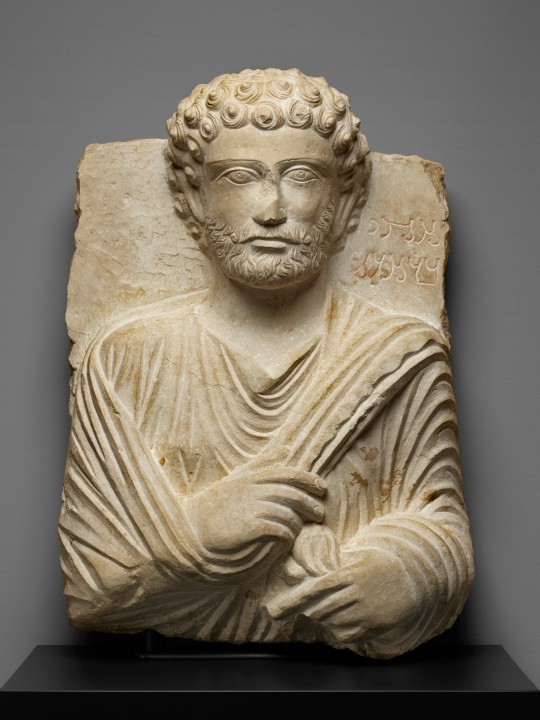
A funeral stele from Palmyra, Syria, dating to around 200 CE. The name of the man depicted is Maqi, son of M’ani -- it's written in Aramaic next to his head. He was likely a rich merchant of some kind.
{WHF} {Ko-Fi} {Medium}
89 notes
·
View notes
Text

The Lord's Prayer...translated from Aramaic directly into English.
Rather than from Aramaic to Greek to Latin to English (which most of us are used to from the King James version:
O cosmic Birther of all radiance and vibration,
soften the ground of our being and carve out a space within us where your Presence can abide.
Fill us with your creativity so that we may be empowered to bear the fruit of your mission.
Let each of our actions bear fruit in accordance with our desire.
Endow us with the wisdom to produce and share what each being needs to grow and flourish.
Untie the tangled threads of destiny that bind us, as we release others from the entanglement of past mistakes.
Do not let us be seduced by that which would divert us from our true purpose, but illuminate the opportunities of the present moment.
For you are the ground and the fruitful vision, the birth, power, and fulfillment, as all is gathered and made whole once again.
And So It Is!
[Samuel Delany]
22 notes
·
View notes
Text
Phoenician Alphabet, The First True Alphabet
Phoenician alphabet, the first true alphabet, the ultimate ancestor of most modern scripts like Greek, Latin, Hebrew and Arabic alphabets. It has 22 letters, all consonants (it's actually an abjad) and written from right-to-left horizontally.

The Phoenician alphabet is a direct descendant of the Proto-Sinaitic alphabet. Developed by the Phoenicians and thanks to their trade especially maritime trade, it spread across West Asia and Mediterranean, making it the most widely used alphabet at that time.
Maybe this is subjective but this alphabet has a big influence, especially two of its derivative variants, Greek and Aramaic. Its simplicity makes it easy to learn and widely adapted. It's the most well-known and valuable heritage of the Phoenicians, thanks to them.
The Greeks modified the Phoenician alphabet, especially by adding vowels, thus creating the Greek alphabet. The Etruscans modified the Greek alphabet (specifically the Euboean Greek alphabet) and creating Etruscan alphabet which is the direct ancestor of Latin alphabet.
The earliest inscriptions of this alphabet date from around the 12th or 11th century BCE. Many come from Byblos, Lebanon and Carthage. This was used to write Phoenician, Punic, Old Aramaic, Ammonite, Moabite, Edomite, Hebrew and Old Arabic.
The use of the Phoenician alphabet proper (the original alphabet, not modified) began to disappear in the 1st century BCE especially after the destruction of Carthage. Derivatives of this alphabet elsewhere at that time were used by many languages.
In the photo I wrote the Phoenician alphabet on paper along with the names of the letters and their transcription. Sorry if the writing seems stiff. Again, thanks to Phoenicians for this.
Taken on Saturday, 24 February, 2024 at 02:37 with Samsung Galaxy A10s.
#sofiaflorina#phoenicians#phoenician alphabet#alphabet#writing system#linguistics#linguistic studies#linguistics tag#historical linguistics#language#languages#history#greek#latin#hebrew#aramaic#arabic#carthage#proto sinaitic#greeks#etruscan#polyglot#polyglots#language learner#language stuff#language learning#langblog#langblr#langbr#language blog
11 notes
·
View notes
Photo


Achilles and Patroclus (ܐܟܠܘܣ ܘܦܛܪܩܠܣ, scene from the Iliad, book 9), and Orpheus taming wild animals, two mosaics from 2nd century Edessa, kingdom of Osroene (ܡܠܟܘܬܐ ܕܒܝܬ ܐܘܪܗܝ), modern day Turkey, with inscriptions in Syriac Aramaic.
204 notes
·
View notes
Text
youtube
Our Father prayer in Aramaic. Aramaic is the language spoken by Jesus. We are fortunate to have the Lord's Prayer not only in the original language but also Sung so beautifully in the original language. Listen and be blessed by this most powerful prayer of Jesus.
"For those that want to sing along:
Abun d-bashmayo Nithqadash shmokh
Tithe malkuthokh
Nehwe sebyonokh
Aykano d-bashmayo
Oph bar`o hab lan
Lahmo d-sunqonan
Yowmono washbuq lan
Hawbayn wahtohayn
Aykano doph hnan
Shbaqan l-hayobayn
Lo ta`lan l-nesyuno
Elo paso lan
Men bisho metul d-dylokh
Hi malkutho whaylo wteshbuhto
L`olam `olmin
Amin"
16 notes
·
View notes